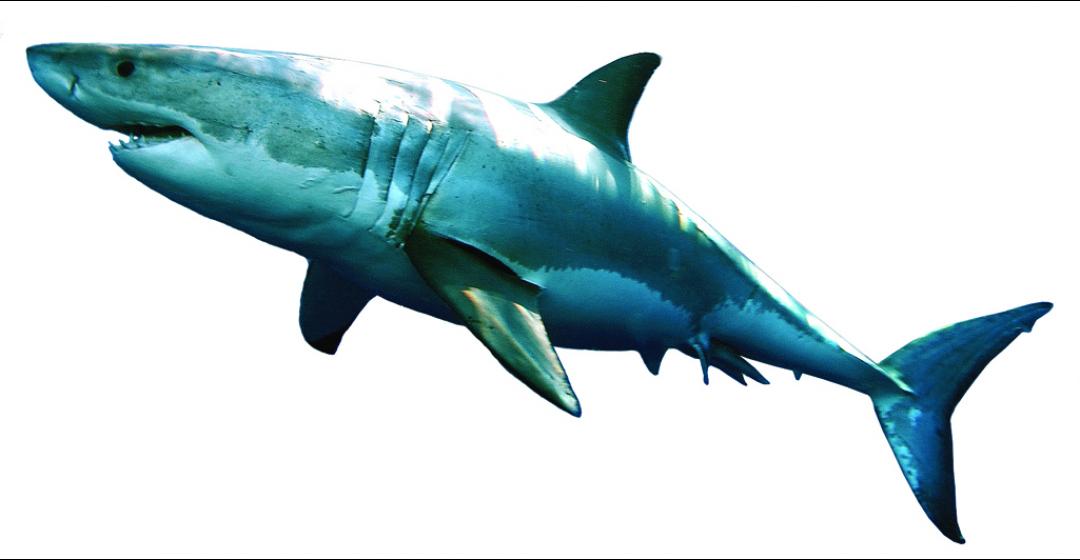Forty years ago Jaws put the Vineyard (masquerading as an island called Amity) and white sharks on the same Hollywood map. The celluloid great white shark that terrorized beachgoers gave sharks a bad rap, and swimmers reason for pause, for years. But interest in real sharks, especially the whites – the official name for the species does not include the “great” – has been on the rise in recent years, and today would-be Quints and Brodys would need more than a bigger boat before chumming the water for a shark. They’d need a permit.
In early June the Massachusetts Department of Marine Fisheries (DMF) instituted emergency regulations prohibiting people from attracting or capturing white sharks in state waters without a permit issued by the state. Similar to rules in other parts of the world with healthy white shark populations, including South Africa, Australia, and California, the new regulations aim to protect both people and sharks by limiting activities designed to attract the big fish. These include cage diving, baiting and feeding, towing decoys, and applying research devices on the sharks.
“It’s really a first step in creating an environment that both maximizes public safety and protection and conservation of this animal, and perhaps explores economic development activities that involve white sharks,” said John King, a board member for the Atlantic White Shark Conservancy, a Chatham-based organization that supports research and education about the apex predators. The conservancy supports the proposed regulations.
“What’s important is the white shark activity occurs very close to shore because the main attraction is the seal population,” King said. “Now you have a situation where you have people using a variety of means to attract sharks in a place where people might be surfing or swimming or kiteboarding.”
The DMF said the presence of white sharks in the summer has spurred “the development of cage diving and other white shark tourism businesses,” but added that studies have shown that humans interfering in sharks’ feeding and swimming behaviors might lead the big fish to associate humans with food and make them more aggressive toward humans.
King said the emerging shark regulations are not unlike regulations put in place at the beginning of the whale watch industry thirty years ago. “It allowed experts, both scientists and policy advisors, to get together and figure out the sort of appropriate code of conduct to interact with whales,” King said. “And to do that as early as possible before you get citizens investing time and effort into businesses that may not be based on best practices, or too skewed to putting public safety at risk or harassing the animals.”
Despite their popularity, much is unknown about white sharks, including how many are out there. (An ongoing five-year study by state shark expert Dr. Greg Skomal aims to answer that basic question.) But one thing seems certain: the recovery of the local gray seal population, thanks to the Marine Mammal Protection Act introduced in the early 1970s, has lead to more shark sightings in the waters around Cape Cod and the Islands in recent years. This return of the apex predator is a sign of a healthy ecosystem, King said. “It’s a new element we have to deal with,” he added. “I would prefer to think that it’s an opportunity.”
While the shark regulations are in effect on an ad-hoc, or “emergency,” basis discussions are ongoing about whether and how they should be permanently in place, and the DMF is welcoming public comments and holding hearings about the regulations. Meanwhile, the rule does not apply to normal fishing and boating activity. White sharks are already a prohibited species when it comes to fishing, and fishermen chumming with the intention of targeting other fish are still allowed to do so. Boaters that encounter a white shark are not in violation as long as they do not attempt to feed or lure white sharks.
Meanwhile, the Atlantic White Shark Conservancy reported that the first white shark of the season was spotted in late June off Orleans: a fifteen-foot female called Freckles who is new to the conservancy’s database.
“She was beautiful,” said King.





